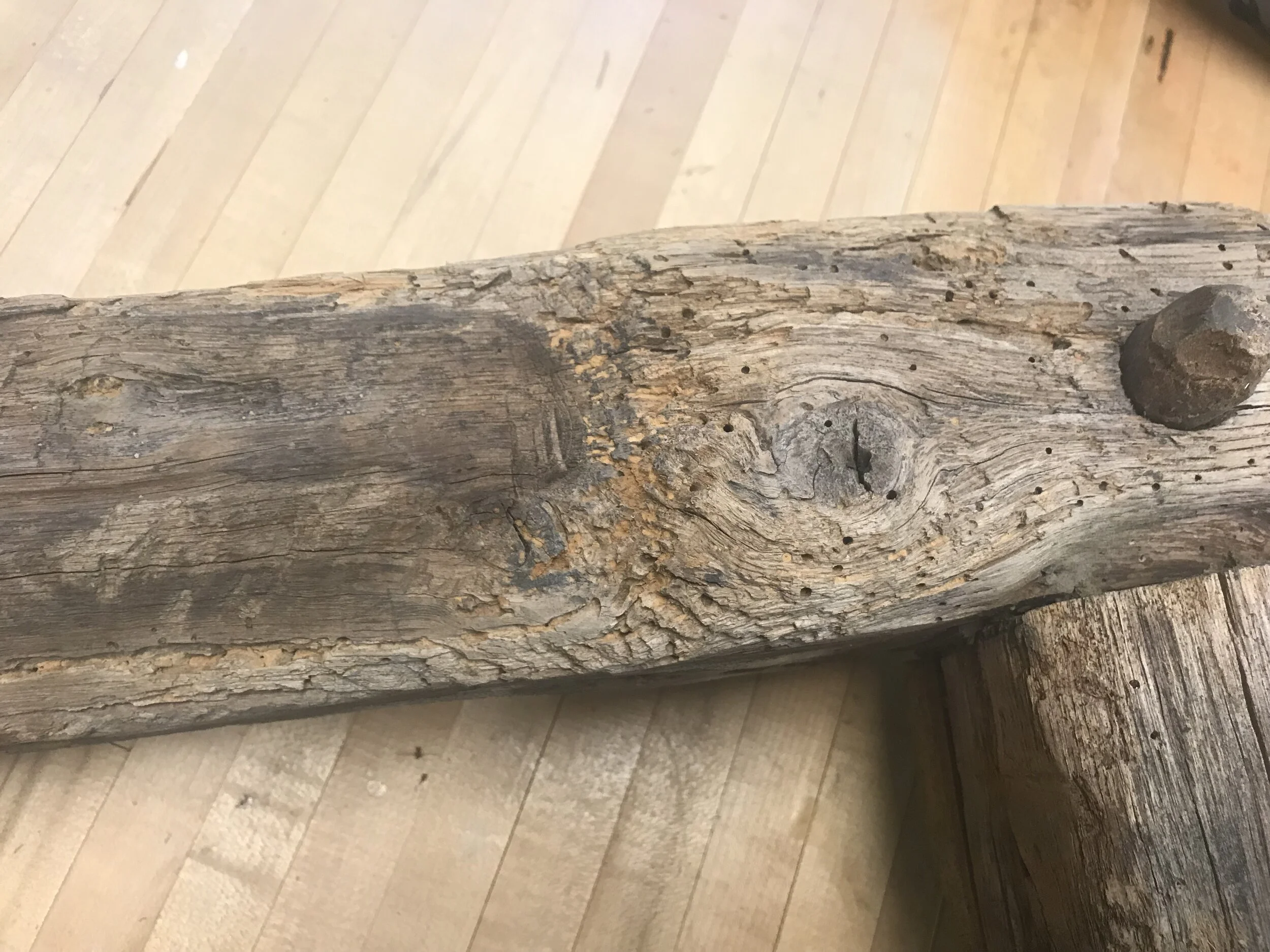Conservation of the Adam and Eve Door Canopy
Before treatment photograph. In outdoor storage at Wharton Esherick Museum
From: Laura Heemer, Curator & Program Director at Wharton Esherick Museum
Accession #: ACP 1738
Object: Adam and Eve Door Canopy
Object Date: 1920s
Maker/Artist: Wharton Esherick
Materials: Fir for the roof elements and white oak for the carved bracket supports possibly (Anderson, 2019)
Dimensions: Adam and Eve - 34” W x 39.5” H x 4.5” D
Roof frames – 50.5” x 50.5” (thickness: 1.75”)
Beam – 42.5”L x 3.5”H x 2.25”W
Inscriptions: N/A
Creation Place: Chester County, Pennsylvania
Owner: Wharton Esherick Museum
Examined and Treated by: Yang Xu
Description
Wharton made an awning support for the doorway to an earlier Studio on his Farmhouse property in the 1920s. The awning support was carved into figures of Adam and Eve, and sun, and it’s called Adam and Eve. When the family sold that property in the 1990s, they took the piece down and stored it up at the Wharton Esherick Museum under Wharton’s woodshed where it has been ever since. The piece is called Adam and Eve and while it’s been safe for a long time, the curatorial committee think its best to move it indoors to protect it from the elements and theft as well as insect infestation. (Heemer, 2018)
Condition
The Adam and Eve Canopy is generally in good condition.
The structure is stable and safe for installation and exhibition. The major condition issues are weathered wood and loss of material due to previous outdoor storage condition and damage caused by pests. The small holes and powdery/weathered area are mainly located in the places close to sap wood, which is relatively vulnerable and would attract pests, like the probable powder post beetle in this instance.
Deposition of dust and grime on the surface also contributes to the discoloration of the wood. There are also some greasy staining spots on the surface.
Rationale for Treatment
The curatorial committee of the WEM decided to move the Adam and Eve Canopy indoors for future storage and protection. It’s essential to conduct preventive conservation treatment before moving it into indoor environment, to protect the objects in the collection from potential risks, especially pests.
Minor treatments like dusting and consolidation of the wood will also help to preserve the object.
Treatment
Fumigation chamber at Winterthur
1. Fumigation with CO2 (Done by William Donelly, from September 19, 2018, for 40 days)
2. Dry surface cleaning
Vacuumed with a soft brush, avoided the weathered areas cautiously.
3. Consolidation
Some consolidation of the weathered wood may be necessary prior to moving into indoors. Consulted with Richard Wolbers, Avalure AC 315 (2-propenoic acid, 2-methyl-, polymer with ethyl 2-propenoate and methyl 2-methyl-2-propenoate), an acrylates copolymer used in the cosmetics industry was recommended to consolidate the weathered area. Considerable success has been previously achieved with this material[1].
Brushed the Avalure AC 315 (5% in denatured ethanol) to the weathered areas.
Up to three applications on the severely weathered areas.
Wait for the consolidant to set/dry for at least 3 hours.
[1] http://www.preservationscience.com/projects/paints/bm-overview.html
American Building Museum: Building-Sized Paint Restoration, last accessed 5/2019
Consolidation Test
Apply Avalure AC315 (5% in denatured ethanol) to the weathered spots with brush.
At some heavily weathered spots, do up to three applications.
Wait for the consilidant to set /dry for 3 hours
Apply the consolidant to some sawdust to test the strength. The consolidant gave the sawdust enough strength.
Results:
The crosslinking and penetration of the consolidant worked out very well. The strength of the consolidant achieved the goal of consolidation and won’t cause damage to original material. The consolidant will cause darkening of the color when it’s applied, however, after a few hours it sets, the slight color change is acceptable (see the after testing picture).














